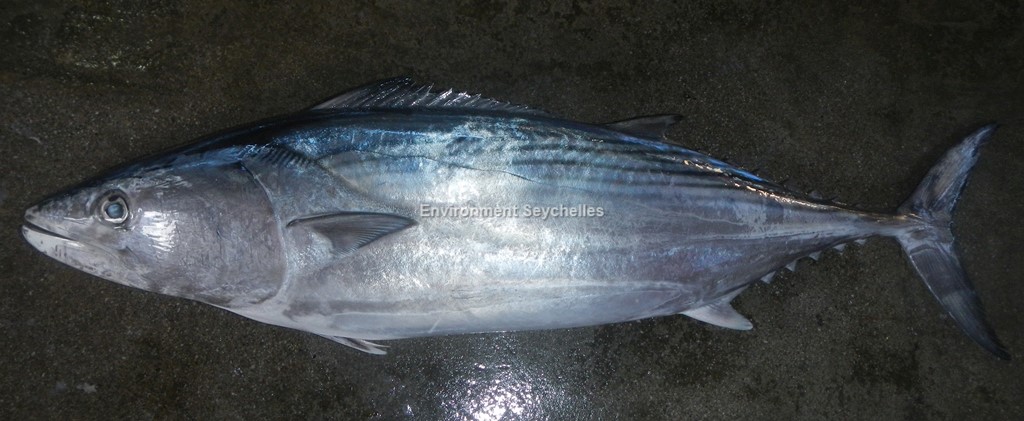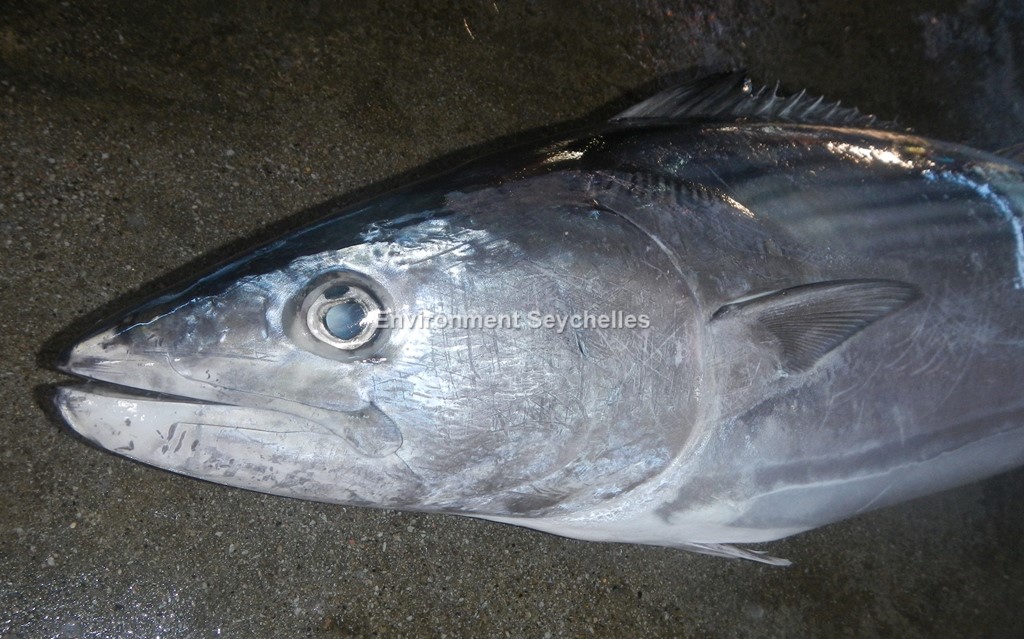Description:
Dorsal spines: 17-19; Anal spines: 0; Anal rays: 14-16; Vertebrae: 44-45.
Body oblong and moderately deep. Mouth moderately large. Jaws with a row of relatively large conical teeth. Body mostly covered with small scales but with corselet of thick scales at front of body. Dorsal Ray followed by 7 to 9 finlets. Anal Ray followed by 6 to 7 finlets. Mid lateral fleshy keel on caudal peduncle continues onto tail fin base between two smaller keels. Colour. Head and body bluish grey, with 5 to 10 slightly oblique dark stripes dorsally. Faint bars sometimes visible on middle of body. Juveniles have dark vertical bars on body.
Size:
Maturity: Lm unknown. Range unknown. Max Length: 102cm FL. Commonly to 55cm TL.
Habitat and Ecology:
A coastal pelagic species, including islands (depth 1-167m. usually 1-30m). Often found schooling with other small scombrids. Feeds on fish, squid, pelagic crustaceans. Little known on this species biology.
Fishery Status:
This species is not protected or subject to fishery regulations. It is caught in the hand line fishery, trolling and in nets, but is a relatively uncommon component of the catch.
Notes:
The all-tackle angling record is a 10.65 kg fish with a fork length of 89.5 cm taken off Mahe, Seychelles, in 1975.
References:
Collette, B.B. & Nauen, C.E. (1983). FAO Species catalogue. Vol. 2 Scombrids of the World. An Annotated and Illustrated catalogue of Tunas, Mackerels, Bonitos and Related Species Known to Date. FAO 1983. ISBN 92-5-101381-0
Collette, B. et al 2011. Sarda orientalis. The IUCN Red List 2011: e.T170313A6743337. http://dx.doi.org/10.2305/IUCN.UK.2011-2.RLTS.T170313A6743337.en. (01/06/19).
Froese, R. & D. Pauly. Eds. 2019. FishBase. https://www.fishbase.cn/summary/SpeciesSummary.php?id=114 (01/06/19).
Citation:




Im obliged for the article post.Much thanks again.
I think this is a real great article post.Really looking forward to read more. Will read on…
Say, you got a nice article.Thanks Again. Really Cool.
Thanks-a-mundo for the article post.Thanks Again. Keep writing.
Very neat blog post.Really thank you! Fantastic.
I am so grateful for your blog.Really looking forward to read more. Much obliged.
Thank you for your blog post.Really thank you! Really Cool.